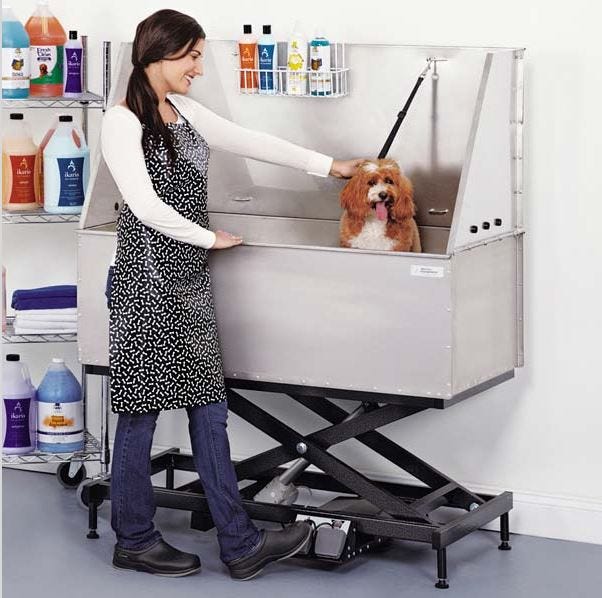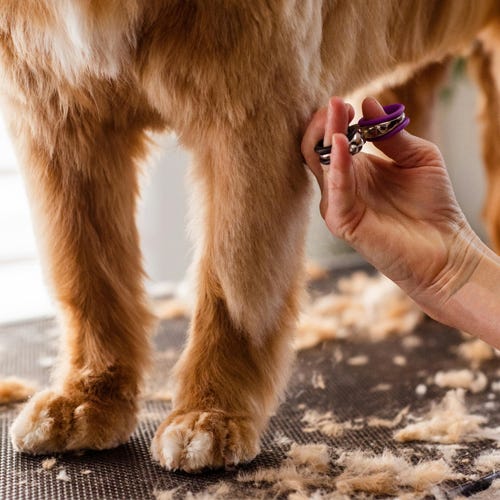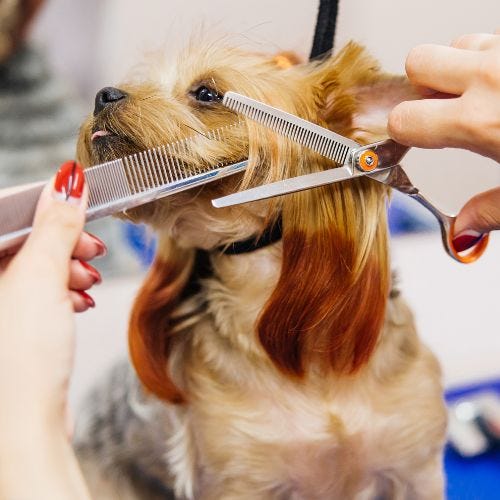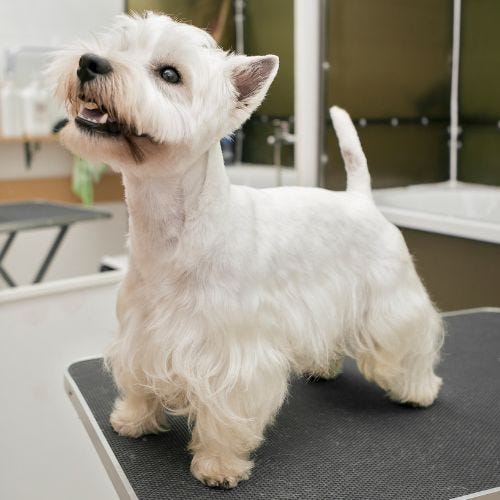10 Ways to Make Your Pet Grooming Equipment Work for You
07/21/2014
ME Everyday Pro Deluxe Lift Tub
At the end of the day, are your arms and wrists sore? Does your back hurt? Groomers feel the impact of all the hard work that goes into creating a beautiful, sweet-smelling pet at the end of the day. Far too many groomers suffer from repetitive motion injuries, as well as chronic pain from overexertion. Even if you have been fortunate enough to have avoided such discomfort, there are tried-and-true practices, equipment and tools you should use to make your work go faster and more efficiently. A few subtle changes can help ease symptoms of existing injuries or help avoid complication in the future. Let's review a typical day from start to finish, and find ways to make your tools and equipment work for you!
Work Space - Is your work space arranged so you don't have to lift from the ground? Use a ramp or stairs if you don't have a table that lowers sufficiently. Also be sure to use a stool or chair (with or without a back) as a footrest. Place anti-fatigue mats wherever you frequently stand. Wear comfortable, closed-toe shoes with good traction and support. Arrange your work space so your hands usually work at elbow height of slightly below. Remember to stand up straight. Your body functions best when it is as upright as possible. Don't bend over a table to use a grooming tool. Keep your back straight but not rigid. Placing your feet one at a time on foot rings can give your back a rest. Position the dog in a manner that is comfortable for you. Always work close to the pet. It is not only better for you physically; it also keeps the pet under control.
Ramps - When you take in small and medium-sized pets, don't bend to the floor to examine them. Place a small table near your shop's entrance and place stairs or a ramp leading up to the table. For large dogs, install an eyehook near your shops' entrance. At check-in, attach the dog with a kennel lead to avoid having to stand on his leash to look him over.
Cages - Examine your cages. Do you need to crouch down or crawl in order to clean them? Are the closures secure, yet easy on your wrists and fingers? Good cage systems will pay you back in terms of time gained, your comfort, and the efficient use of space.
Grooming Tables - What kind of tables do you use? Electric hydraulic tables rise from 19 to 42 inches at the touch of a pedal and have built-in outlets for your equipment. Hydraulic tables rise from 19 to 39 inches with a few easy pumps of your foot and rotate to allow you to stand in one place. You don't have to continually walk around the table; an incredible time saver. Adjustable height, stationary tables and leg extensions help level tables on uneven surfaces, or add a few extra inches of height so you won't need to stoop unnecessarily. Keep a Lazy Susan nearby for small dogs. Give a dog only as much space as he needs. Prevent him from dancing away from you and causing you to lean across the table. The closer you work to the dog, the better. Stand on an anti-fatigue mat to reduce impact on your legs, knees and back while you work.
Organizers - All of your equipment, tools, and supplies should be within easy reach. Arrange them according to what you use most. Use racks designed to hold clippers, blades, shears, ribbons, nail polish, tools, and solutions. Return your supplies to the same place every time to minimize unnecessary searching and maximize speed. If you work out of a cart, keep it clean and well-maintained.
Brushes and Combs - Scissoring, brushing, and dematting tools can cause more hand fatigue problems than anything else. Take advantage of any product designed to minimize wear and tear on your hands and wrists. Always use the right brush for the task, and replace them as needed. The pins in a slicker brush become less rigid with time and eventually become less efficient; you use more strokes to achieve the same result. Use brushes and combs that are comfortable and reduce hand fatigue.
While brushing and dematting, keep your hands and wrists loose but straight. Don't bend or flick your wrists at the end of your strokes. Tools with a wide back or handle prevent hands from cramping. Experiment with both comb and rake-style dematting tools. Ergonomically designed tools such as the Top Performance Master Groomer Tools allow you to groom more comfortably and with less effort.
Nail Trimmers - Make sure your trimmers are smooth and sharp. Use the trimmer, instead of your hand strength, to cut the nail. Make sure you have a heavy-duty nail trimmer for pets with thick, hard-to-cut nails.
Blades - Are your clippers well maintained? Keep your blades sharp and keep spares on hand. Most groomers do not lubricate their blades often enough. Regular oiling will prolong blade and clipper life significantly. Use only a clipper that is lightweight and comfortable. Make sure your clipper does the work, not your hand. Hold your clippers lightly, as you would a pencil.
There should be enough space under the tub for your feet. This will allow you to stand as close to it as possible. Install a ledge or rail, or get a stool to put your foot on to relieve back stress. When bathing small pets, place a short rack or platform in the tub a few inches high to avoid unnecessary stooping. Invest in professional tubs designed with roll-away ramps or movable pet stairs. Place non-slip, shock absorbing mates in your bathing area for added safety and comfort.
Dryers and Towels - Don't expend unnecessary effort by moving your dryer around the shop, or constantly repositioning the dryer arm! Consider a table-mount or hydraulic ceiling-mount dryer. Attach your force dryer to a wall to prevent constant bending and lifting. Also, keep your towels within close reach. Microfiber towels and moisture magnets absorb more water than traditional terry towels to reduce drying time.
Make sure your dryers have sufficient power; the less time you spend drying and brushing, the easier it is on your hands, and the more pets you'll be able to groom.
Shears - A good shear should feel comfortable and balanced. This feel is based on personal preference. An effective, quality shear will open and close smoothly and easily, without resistance, with little or no effort. It should cut cleanly and quietly. Don't be penny-wise and pound-foolish when it comes to your shears. Your investment will pay off in terms of less fatigue, higher productivity, and a longer career as a groomer.
Watch our video on caring for your shears
Try these tips and upgrade your equipment whenever possible. Your body will thank you for it! By being time and energy-efficient, you will be more productive and your business will be more profitable.





